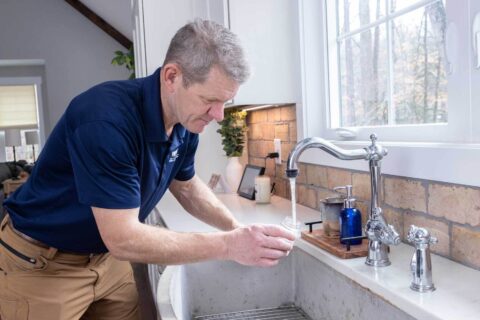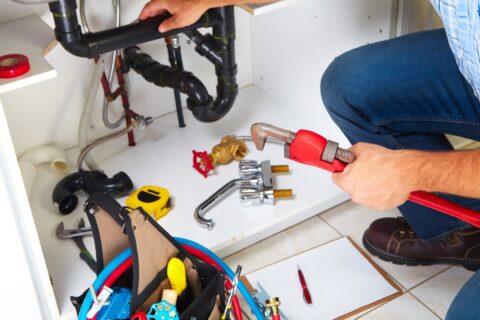Heating System Repair Services by Reliable HVAC Experts
Key Takeaways
-
Identify the warning signs of heating system problems, including no heat, uneven heating, or strange noises, so you can stop problems before they spiral out of control.
-
Maintenance, like checking filters and ducts, prevents common breakdowns and improves system efficiency.
-
Keeping an eye on energy bills and system performance can identify inefficiencies, encouraging prompt repairs or upgrades to cut costs over time.
-
Pilot light issues and weird odors should be dealt with as soon as possible to stay safe and avoid any risks in gas heating systems.
-
Keep in mind how the climate and seasonal variations affect heating, and plan your maintenance or upgrades with this in mind.
-
Select certified HVAC technicians for repairs and maintenance for dependable service, safety, and peak heating system efficiency.
Heating system repair is addressing issues with a residence or commercial building’s heat source, including furnaces, boilers, or heat pumps. Most repairs are for weak heat, strange noises, or systems that won’t start. Routine service can prevent minor issues from becoming major and keep your heating bills to a minimum. They may notice warning signs, such as cold rooms, short cycles or new spikes in their power bills. Repair frequently requires checks for worn components, clogged filters or leaks. Fast saves you money and stress, safe repairs keep the cold at bay with consistent warmth. In this blog we divulge the primary culprits behind heating breakdowns, what to keep peepin’, and when to summon a seasoned pro.
Common Heating Issues
Heating systems go out for a lot of reasons. Understanding common issues gets you trouble early, keeps your home safe and prevents expensive repair costs. Quick response keeps your home cozy and your system purring.
1. No Heat
No heat is a #1 priority for a lot of people. A defective thermostat is the culprit behind this a lot, either sending incorrect signals or none at all. Occasionally a broken blower or dirty air filter traps warm air. Filters should be checked every month, particularly in winter. Swap out a dirty filter immediately. A tripped circuit breaker can cause the system to begin. These are fast inspections, but if the machine continues won’t work, call in a pro for assistance.
2. Uneven Heating
Clogged vents or ducts can prevent heat from circulating through your house. If you’ve got one warm room and another cold, check for closed vents or something obstructing them. A faulty thermostat can contribute to rooms heating unevenly. Thermostats that can’t properly sense the room temperature will turn on and off at the incorrect times. Bad insulation leaks heat, so you get cold rooms. Inspect your ducts for leaks, seal cracks and maintain vents. Redirecting airflow normally does a very good job of evening out the temperature.
3. Strange Noises
Weird noises out of your system, such as banging or popping, can be an indicator of loose or worn parts. Bearings require oil annually to prevent wear. If you detect a burning odor when you initially turn on the heat that’s fine, but if it lingers, you could have an issue. Sometimes noises are accompanied by odd smells, which may indicate a safety hazard, such as a gas leak or overheated wiring. Have a professional inspect your system if sounds or smells are unusual or intense.
4. High Bills
An unexpected spike in your energy bill can indicate an issue. Short cycling—when the heater cycles on and off frequently—uses up the most energy. Dirty filters and leaky ducts make your system work harder, which increases costs. Dirty filters and leaky ducts drive your costs up – clean filters and seal leaks to cut expenses. Replacing with a more efficient system can pay for itself.
5. Pilot Light
Because the pilot light in a gas heater must remain lit for the system to operate. If it continues to blow out, drafts or a faulty thermocouple could be the cause. A pilot light that won’t stay lit means no heat and can be hazardous. In that case, call in a technician to inspect the components and repair or replace as necessary.
Climate’s Impact
Climate determines how effectively heat systems operate within a space. Local weather, from warm winters to arctic cold snaps, dictates their operating schedule and intensity. In areas where it’s cold out or the temperature drops unexpectedly, heating systems run extra hard. This can drive up energy consumption and cause additional wear and tear, prompting more frequent repair and inspections. In softer climates, the strain on heating systems is more gentle, yet a shifting weather profile dictates a system must continue to be prepared for duty.
Heat is not the only thing extreme weather increases the demand for– it transforms energy consumption. The colder it is, the more energy folks utilize to stay warm at home and work. Nearly a quarter of all the energy on earth is to heat and cool buildings. According to the IEA and UN Environment Program in 2018 buildings accounted for 30% of energy use and 28% of energy and industry related greenhouse gas emissions. As incomes rise and the world gets warmer, the need for heating and cooling will increase. Take, for instance air conditioners – they’re expected to number 4.8 billion worldwide by 2050, compared to 1.6 billion today. This rapid growth will probably strain grid infrastructure, push up rates, and tax aging heating systems.
With the changing seasons come changes in heating habits. Smart thermostats or zoning can reduce energy waste in the winter. In the milder months, good insulation and airtight windows block heat loss. Passive house designs — with tight seals, insulation, and smart shading — can reduce heating and cooling energy demand by up to 80%. These measures save money and assist those who perhaps lack decent heating, which can be a real health risk in colder locales.
Tech overhauls optimize heating systems for harsh climates. Replacing hydrofluorocarbons and other old refrigerants with safer alternatives have the potential to reduce global warming by nearly 1 degree Fahrenheit. Better efficiency standards for heaters and air conditioners reduce emissions and save consumers money.
Proactive Care
Being proactive about heating systems means anticipating to keep things humming and safe. That way, small issues can be identified and addressed before they escalate into larger, more expensive problems. Most facilities and homes fare better with this type of schedule, as it helps maintain both comfort and safety on a year-round course.
A planned maintenance schedule is the foundation for robust furnace care. Having a plan keeps everyone on the same page, whether you live alone or run a hectic building. To set up a simple routine, try these steps:
-
Tick it off once a year, preferably prior to cold season.
-
Swap air filters every 3 months, or more often if you live in dusty air or have pets.
-
Clean vents and ducts semi-annually, ensuring they remain dust and blockage free.
-
Professional tune-up for the heater and AC, once a year.
-
Jot each check or service down in a log, so you don’t skip any steps.
These fundamentals address the majority of needs. Some homes or structures may require additional attention. For instance, if the air quality is bad or there’s a lot of traffic on the system, you may have to swap filters out or check more often. Seasonal visits with a technician who checks filters, ducts, and parts will catch worn out parts, leaks, or build-up. This can prevent airflow problems, odors, or even system failures before they occur.
Expert tune-ups bring additional safety and expertise. Technicians are able to identify hazards such as frayed wiring, loose components or leaks which may result in electrical fires or electrocution. They can provide deep cleaning and targeted inspections that are difficult to perform without specialized equipment. Most plans come with low up-front or monthly fees so you can spread out the price of routine care.
Proactive care equates to less surprise repairs, lower costs and less rush for service in busy seasons!
Repair Or Replace
Choosing between repair or replacement for your heating system demands a thorough consideration of age, condition and cost. Most heating systems survive about 15 to 20 years if well maintained. If your system is less than 10 years old and it’s a small problem—like a worn part or a sensor malfunction—repairing is usually the smart move. Repairs are cheaper for younger units, because the unit’s residual life justifies the expense.
Price is as important as age. If repairs exceed $5,000 — or if you multiply the system’s age by the repair bill and the total exceeds $5,000 — it’s typically time to start shopping for new. Another clear marker: if fixing the unit costs more than half the price of a new one, swapping the whole system makes better sense. For instance, if your system is 12 years old and requires a $600 repair, that’s $7,200 (12×600), which says replace. Sure, you can repair that 20-year-old system, but that’s not very smart — most of the parts are worn and about to break soon.
Speed is the name of the game. Older systems typically consume more energy and inflate utility bills. Newer models, particularly those constructed within the past 15 years, consume less energy and can save you money in the long run. If your unit always requires repairs, or if it experiences a significant component failure—such as a compressor or evaporator coil—replacement can avoid more expensive malfunctions down the road. In certain climates, heating systems work extra and may wear out sooner, so local conditions should play into your decision.
See the table below for a quick look at repair versus replacement:
|
Factor |
Repair |
Replacement |
|---|---|---|
|
Cost |
Lower upfront, but may repeat |
Higher upfront, long-term saving |
|
System Age |
Best if under 10 years |
Best if over 15 years |
|
Energy Efficiency |
Usually lower |
Higher, lowers utility bills |
|
Comfort |
May not improve |
Often improved |
|
Long-Term Value |
Short-term solution |
Long-term benefit |
Smart Systems
Smart heating systems revolutionized the way we experience comfort indoors. These systems leverage technology such as smart thermostats to optimize heating schedules and reduce energy waste. For example, a smart thermostat knows if you’ve left a room and can turn the heat down, then back up when you return. This makes heating and cooling operate up to 30% more efficiently. Others pick up on regular habits, such as when everyone heads out for work or bed, and automatically adjust settings based on that information. This equals less labor for the user and more savings in the long term.
Energy efficiency is probably the biggest perk of smart heating. We installed smart systems to control the heating of these spaces, so heaters only run when needed, which means less energy used. This can save users 20-30% on energy costs over time, but purchasing a new system can cost more upfront. Smart systems can display real-time information—such as energy consumption or potential anomalies—allowing for quicker repairs. Instant data allows users to adjust their settings to conserve even more.
Remote access is another handy thing. Most smart heating systems connect to apps or voice assistants, meaning you can adjust settings remotely. On a trip or working late? Adjust the temperature with a tap on your phone. IoT integration allows users to monitor and control their system in real-time — a convenience for busy lifestyles. Critical standards such as Zigbee and Z-Wave enable the various smart devices to communicate with each other, so the ecosystem operates seamlessly.
I have a couple problems. Others fret over privacy and security, as smart systems can be hacked or employed to follow a pattern. Crucial to minimize risks is using robust passwords and updating software. Even so, the combination of comfort, control and savings benefits make smart systems a compelling option for many.
|
Smart Feature |
Main Benefit |
Example Use Case |
Potential Issue |
|---|---|---|---|
|
Smart thermostat |
Energy savings |
Auto temperature set |
Privacy/security risk |
|
Mobile app control |
Convenience |
Remote control |
Software updates needed |
|
Learning routines |
Cost reduction |
Schedule tweaks |
Initial setup required |
|
Real-time analytics |
Fast response |
Instant alerts |
Data management |
|
IoT device integration |
Seamless automation |
Smart home linking |
Device compatibility |
Choosing Technicians
Heating system repair isn’t bright choosing technician. It begins with the research. Seek out local hvac companies that are reputable in your area. Look at online feedback and ratings, but don’t just look at the summary rating. Read what ACTUAL PEOPLE say about how the company handled their repair AND IF THEY WERE HAPPY. A trend of positive reviews is an excellent indicator. Well reputed firms would be more trustworthy.
As far as qualifications are concerned, don’t simply focus on a technician’s longevity in the field. Years on the job assist, but they’re not all. Even younger technicians can be great given the proper training and a history of solid work. Certifications count. For instance, a NATE-certified technician has passed a test and refreshes their knowledge through recertification, typically every two years. Certificates from other well-regarded trade organizations demonstrate a dedication to doing things well and picking up new skills. Never hesitate to ask to see evidence of these qualifications.
Be sure the technician or company has experience with your type of heating system. Systems can be very different. Some work on gas, some on electric, some on heat pumps. Familiarity with your specific model or configuration results in fewer hiccups and an easier fix. Seasoned technicians have seen it all and know how to repair it fast.
Price is another. It’s wise to obtain quotes from a minimum of three firms. Request a cost breakdown so you know what you’re paying for. This assists you identify any hidden charges and allows you compare value, not just cost. Others provide a satisfaction guarantee, which might be a year or more, depending on the company and repair. This demonstrates that they support their service.
Excellent service and straightforward communication are requirements. Opt for businesses that will spend the time answering your questions and are transparent about the procedure, pricing, and timeline. If it’s vague, ask.
Conclusion
Heating is more than just selecting the proper system. While quick fixes save time and money, smart checks keep problems small. Cold rooms, weird noises, or increased bills all indicate something worth investigating. Everywhere has its own climate, so one repair never fits all. A reliable tech arrives equipped with precision tools and transparent guidance. They connect to smart systems that help spot trouble early. To make sure you get the most from your heater, check it each year and move quickly if you notice signs of wear. Clean parts, good airflow, and master hands. For anyone looking to keep homes warm and safe, contact a local pro for a quick check or honest repair.
Frequently Asked Questions
What are common signs my heating system needs repair?
Weird noises, inconsistent heating, incessant cycling, increased bills are all common indicators. If you observe these problems, plan a professional inspection soon.
How does climate affect my heating system?
Arctic conditions or excessive humidity can tax your heating system. Maintenance keeps systems running at peak efficiency in any climate and prolongs their life.
Can proactive care prevent costly heating repairs?
Yes. Routine tune-ups — cleaning, filter changes, inspections — that decrease the chances of breakdowns. Proactive maintenance catches potential issues when they’re still small and affordable.
Should I repair or replace my old heating system?
If yours is over 15 years old, continually breaks down or has expensive repair costs, replacement could be a better deal and save you energy.
Are smart heating systems worth the investment?
Smart heating systems provide energy savings, remote control, and enhanced comfort. They reduce utility costs and adapt to your schedule, which is good for most homes.
What should I look for when choosing a heating repair technician?
Opt for licensed, veteran technicians with positive reviews. Look for licensing, insurance and transparent pricing.
How often should heating systems be serviced?
Most pros advise an annual tune-up. Routine maintenance keeps your system efficient and wards off unexpected break-downs.


